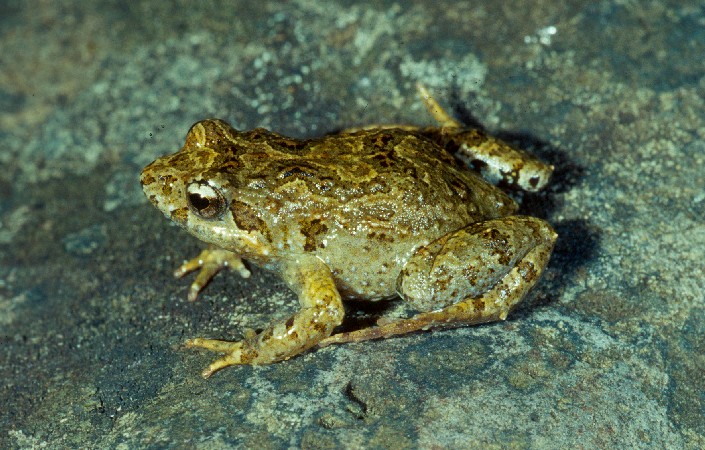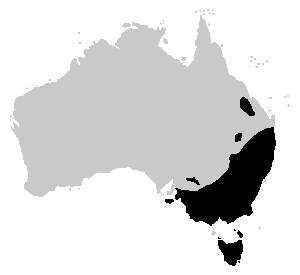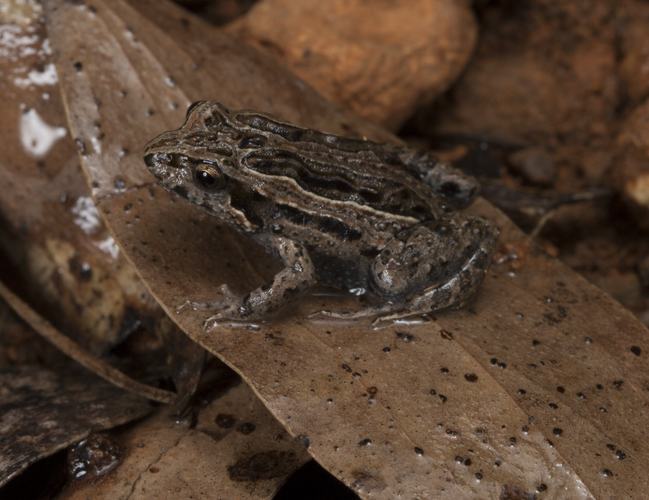Eggs
On average about 200 eggs are laid in small clusters attached to submerged vegetation, the tadpoles and eggs survive in 14-15 °C water.
Tadpoles
Tadpoles are brown or light grey all over with scattered dark flecks. Tadpoles are about 36mm in length. Development is relatively short, however it is dependent on environmental conditions. At a temperature of 15 °C development can range from 6 weeks to more than 3 months.
Distinctive features
Adults have a granular belly which is white or muddy white, heavily mottled with black or dark brown. The patterning on the back is variable but three distinctive patterns are recognised: 1. ridged (longitudinal ridges along back), 2. lyrate (boomerang shaped ridges over the shoulder and on the back) and 3. smooth (back smooth, unpatterned, or with small warts).
Size
Average size of the Common Froglet is approximately 18-28mm.
Behaviour
Breeding can occur any time of year except mid-summer.
Field Guide
Improve your identification skills. Download your Common Eastern Froglet field guide here!





